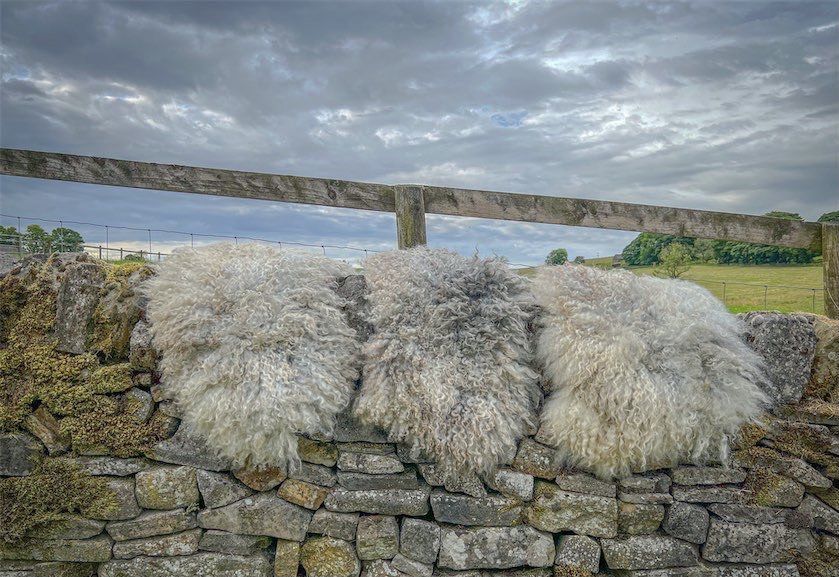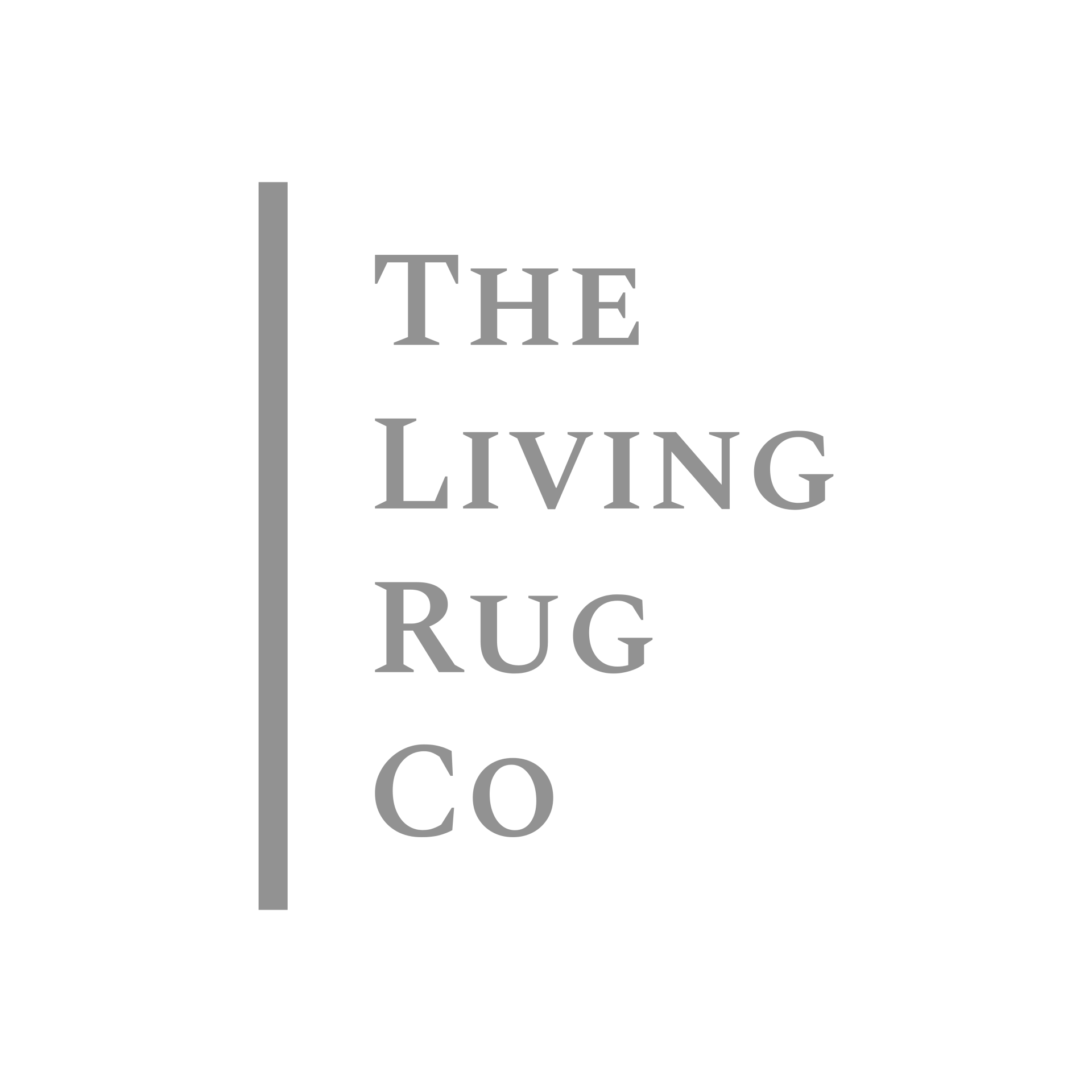FAQs
Got questions? We’ve got answers.
Here's some of the most asked questions about Living Rugs...
-
What is a Living Rug?
A Living Rug is the name we gave to the rugs when we started making them many years ago. These rugs are normally called felted fleece rugs, vegetarian sheepskin rugs, felted sheep rugs, Eco rugs etc. We wanted a name unique to us and what we do which reflected the fact that the sheep that provided the rug is still alive, well and happily living their days on our farm in the Peak District. We also wanted something completely disassociated with the meat industry where our sheep prove they are more valuable alive being sustainable.
-
How are the Living Rugs made?
The technique for making these rugs is called wet felting.The rugs are made in several ways depending on the condition of the fleece. If the fleece is fairly intact and in one piece carded wool is placed on the cut side of the fleece after the fleece has been cleaned of bits of hay, straw etc. The carded wool is worked into the fleece using hot water and soap using your hands to form a new skin. Then it is rolled in lots of directions until the felt is firm. If the fleece is in bits you can create a piece in a frame and follow the same procedure.
-
What are the rugs made from?
We make the rugs from the unwanted fleeces of our home for life flock only. We only use environmentally friendly soap and water from one of our springs on the farm.
-
How hard-wearing are these rugs?
It all depends on the breed and how the fleece/rug is made as some are more light-weight than others.
Most of the rugs we make do not moult but sometimes we get the odd one like a Herdwick or Valais Blacknose which can lose some hairs but we always give details in the description if it does and how much.
You should not have to do any repair on the rugs to replace fibre loss. If this is the case the rug has not been made properly. Obviously these are not sheepskins so are not going to be as strong but some are suitable for the floor as long as the footfall is light. Some you can sit on and again it depends on the breed. It's always best to read the description of the rug when you are purchasing and also read our after-care page which is available online via a password protected portal for purchasers only.
-
How do you clean the rugs?
The rugs are washed lots of times by hand which we find is the best way to get rid of the dirt and the grease (lanolin) from the rug. The rug should be completely clean when you receive it and the tips of the fleece should be clean as well. If the ends (tips) of the fleece are not clean then the rug has not been cleaned properly. We check the rugs for bits of hay or straw and if you are lucky you may find one or two natural bits but as a rule it will be very rare if you do.
-
Can you wash the rug?
All rugs come with care instructions and yes some of the rugs can be washed in a machine but make sure your washing machine has a gentle wool wash as it could ruin your rug. If unsure it's always best to handwash instead. Contact us for more information.
-
Do the rugs smell?
Not if the rugs have been washed properly. We normally do a last rinse in some nice smelling conditioner but this will fade fairly quickly and you will be left with a natural woolly smell. Wool is naturally self cleansing and doesn't keep smells or have odours really.
-
Do you get a picture of the sheep?
Yes. We enclose a free picture of the sheep that the rug came from. Also since we started doing these rugs we put the name on the back of the rugs and the year. Due to other producers copying what we do we have just started hand painting the back of the rugs instead of felting and needle felting the name. If you would like a custom hand-painted back please contact us for details.
-
How old is the technique of felting rug?
Apparently, today's basic technique has been used since before sixth century BC. Some of these pieces of felt of been found in tombs and burial grounds in Siberia, Scandinavia and Germany. The theory is the cold climatic conditions help preserve the fibres. I personally had never heard of felted fleeces until eight years ago while researching for an idea to use my fleeces. It was there I found out that these rugs were very popular in the Netherlands and were called vegetarian sheepskins. I didn’t want to use that word so came up with my own original name Living Rugs. Also, if you would like to know more on felting there is also a great article from the American Anthropologist 9 (Vol 32) on the early history of felt which goes into lots more detail.
Payment & Returns
-
What type of payment methods do you accept?
We take all major credit cards/debit cards and PayPal.
-
What is your return policy?
We don't really have a return policy any more because we are so confident that you will be happy with your rug. If not you need to contact us within 24 hours of receiving the rug. We only normally accept returns if the item is damaged. Please make sure you read the description of the rug to make sure you are buying the right rug for your needs.
Shipping
-
Which shipping company do you use?
We use Royal Mail and Parcelforce. All deliveries are tracked and insured.
General Questions
-
Can I pick up my rug?
Yes. You are more than welcome to pick up your rug but we would like notice please especially during the summer months.
-
Can we visit the farm?
We welcome visitors but not during the winter months which is mostly down to the weather and the short days. Due to the fact I am a one person business I do need as much notice as possible if you wish to arrange a visit.
-
Do you have a waiting list?
Please drop us a line if you wish to join our waiting list with as much info as possible please. We do have an extensive waiting list but we can always try and fit you in depending on your requirements.
-
Could you make a rug from my sheep fleece?
No Sorry.
All Rights Reserved |The Living Rug Company Ltd



